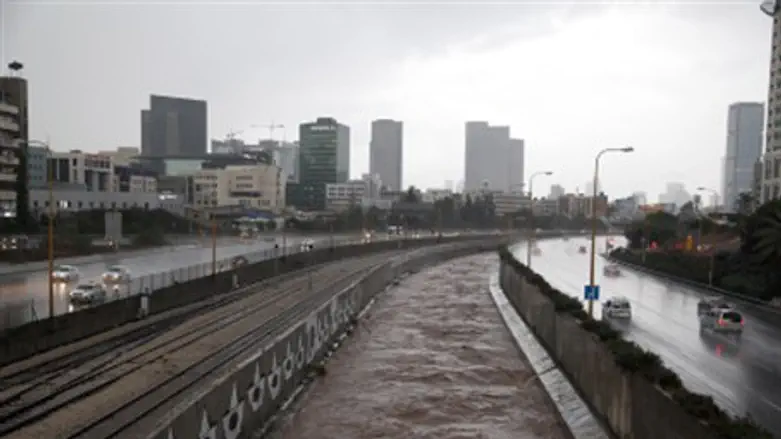
The “storm to end all storms" that hit Israel this past weekend will be remembered not only for how a major snowstorm brought many parts of the country to a halt, but for the unusual bounty of water it provided the country. According to the Meteorological Institute, over 200 millimeters of rain fell between Wednesday and Saturday on average in Israel.
That water, in the form of rain and melting snow, will eventually fill Israel's aquifers, as well as the Kinneret, or Sea of Galilee. On Sunday morning, officials measuring the Kinneret expressed strong optimism that Israel's largest body of fresh water would soon be completely full. As of Sunday, the Kinneret was short about 2.5 meters in order to reach the “upper black line,” at which point it is considered full.
Even the usually arid Negev benefitted from the rainfall. On average, the Negev got about 200 millimeters of rain, almost three times the amount of rain that should have fallen there by mid-December. Other parts of the country are also “ahead” in their rain amounts, having received as much as double the amount usual up until this point in the winter.
Jerusalem, the epicenter of attention in the storm, received a total of 243 millimeters of moisture, most of it in the form of snow, which piled as high as a meter (three feet) in many parts of town. The Sharon-area town of Kfar Sava got the most rainfall, with moisture amounts reaching up to 303 millimeters.